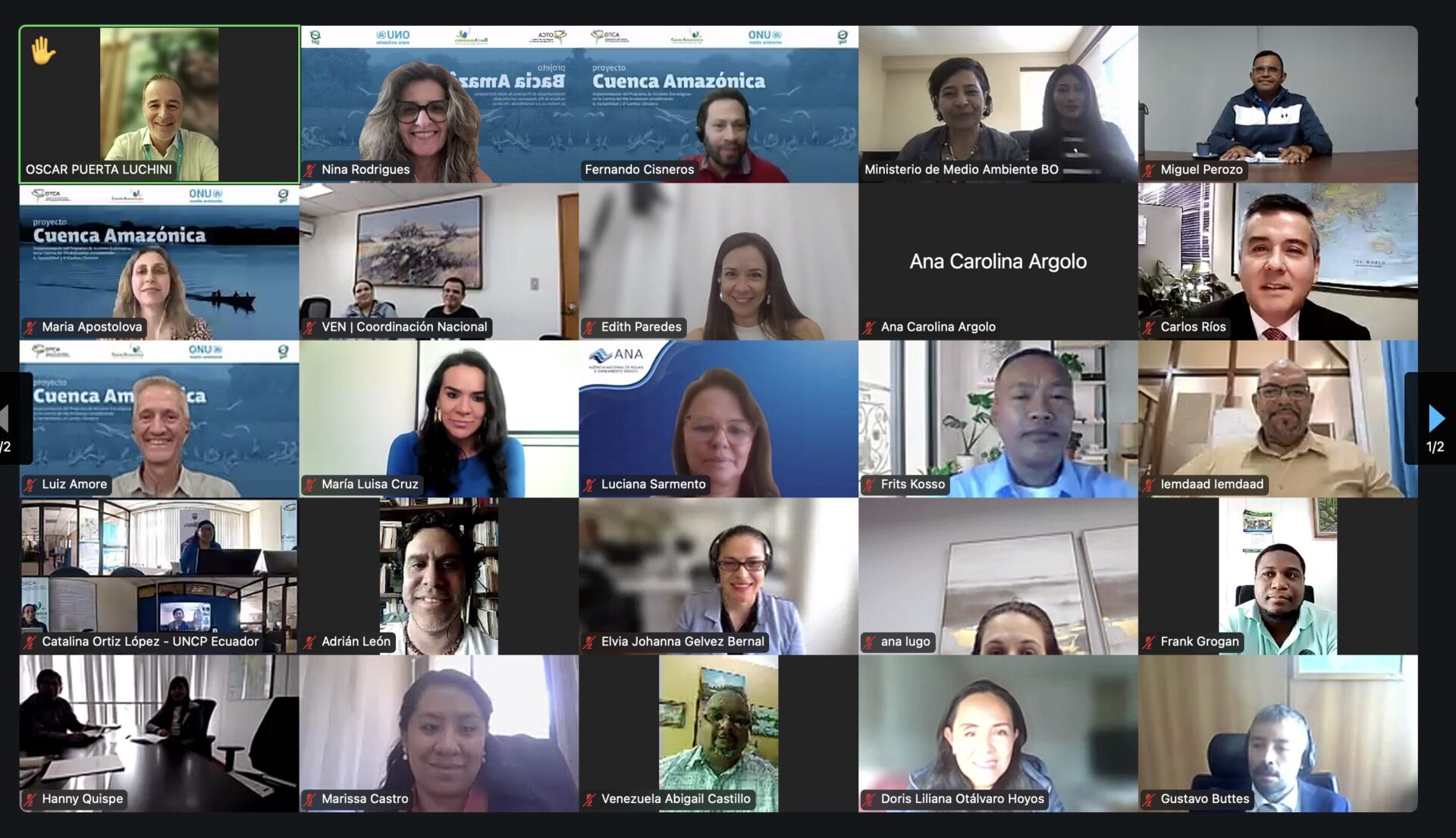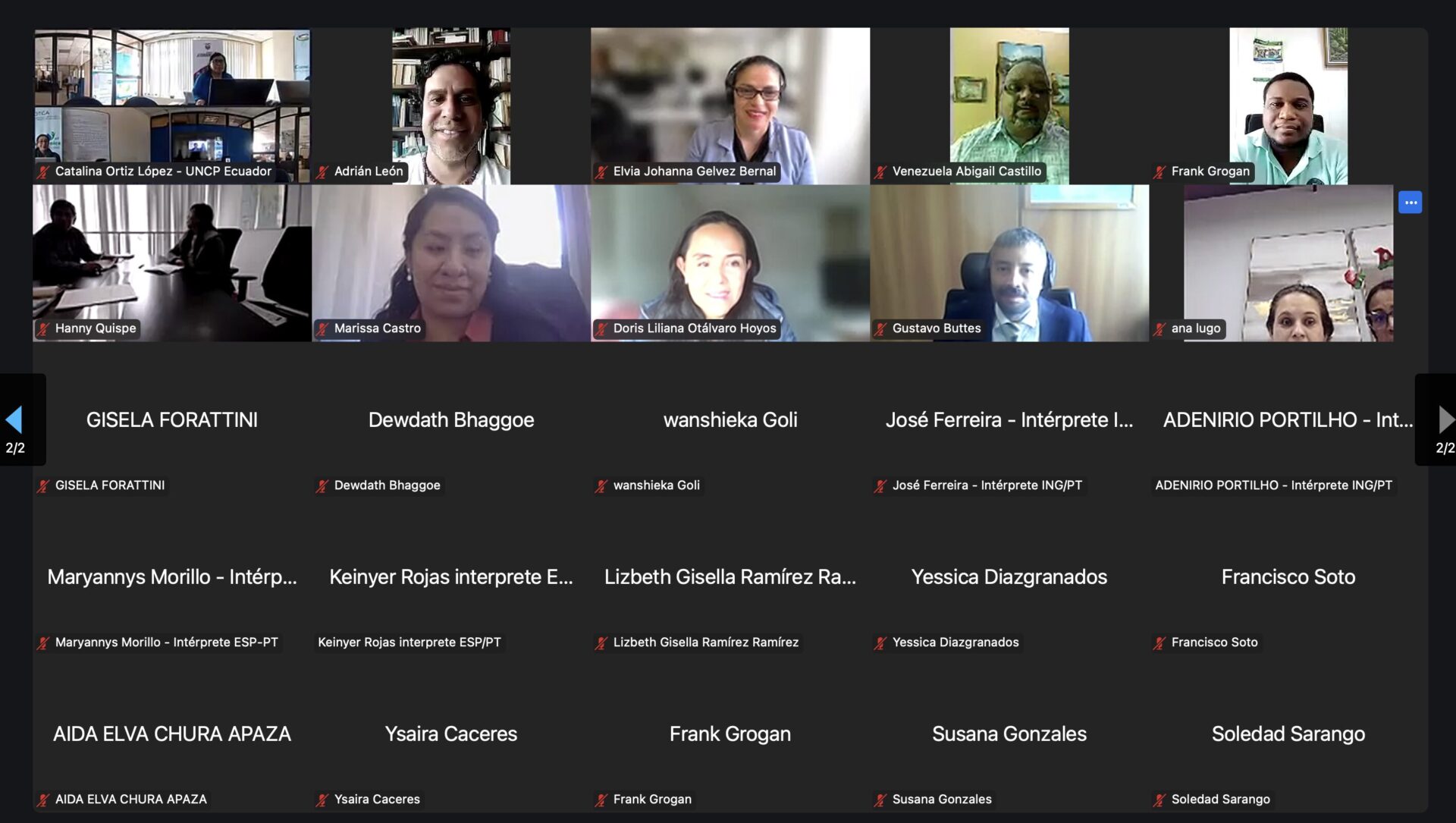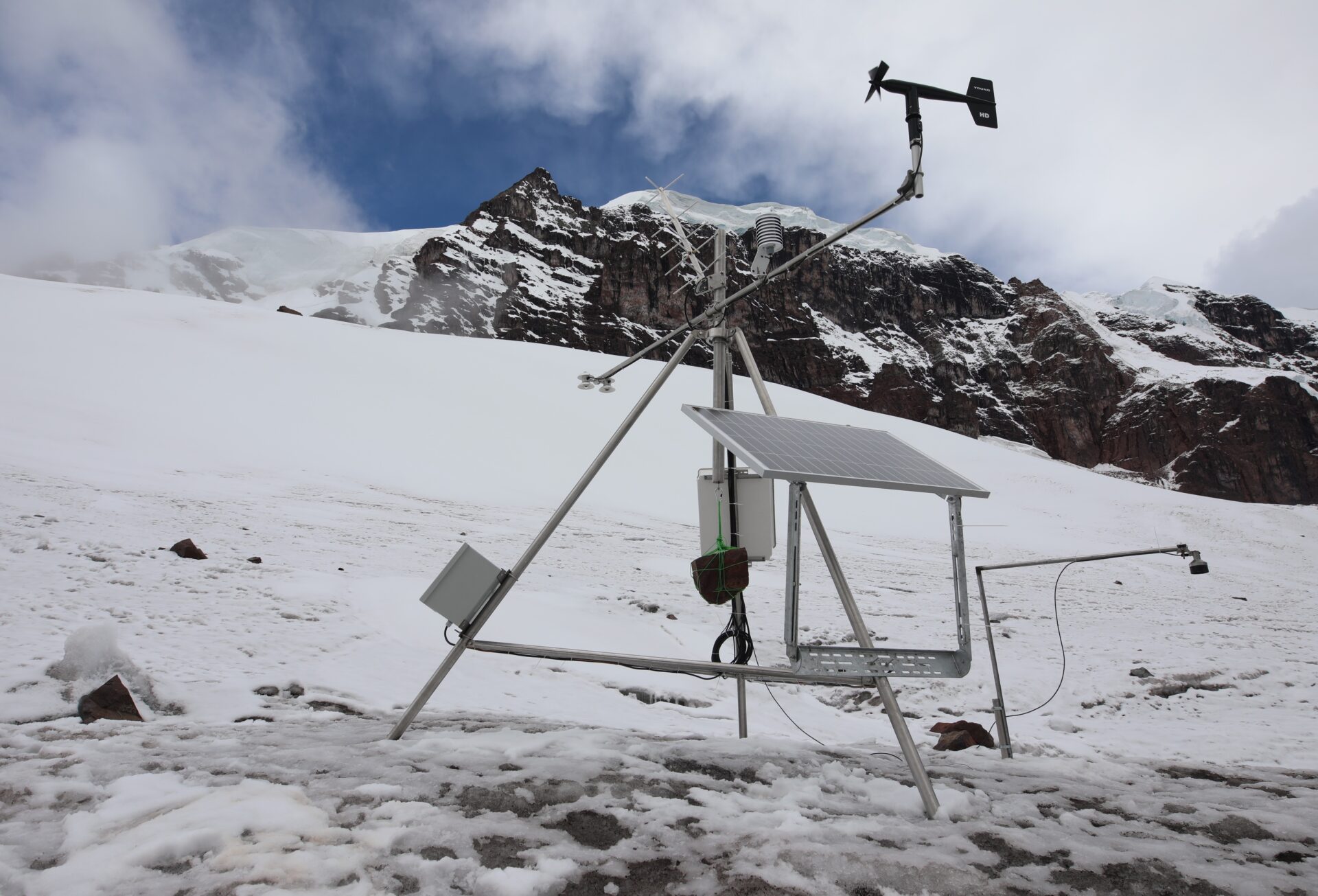Meeting virtually on October 4, the Amazonian Network of Water Authorities (ANWA) formally approved its Regulations. On this occasion, its Work Plan with four action fronts for the 2024 to 2026 period was also approved ad referendum. The fulfillment of the two points on the meeting’s agenda was celebrated by the water authorities present, as it marked the beginning of ANWA’s activities. The Amazonian Network of Water Authorities was created in 2023 by the presidents of the eight Amazonian countries to advance the shared management of the Amazon Basin’s water resources.
The II ANWA Meeting was coordinated by the General Director of Hydrographic Basins and Water Resources of the Ministry of the Environment and Water Resources of Bolivia (MMAyA), Ximena Campos Fernández, who was named president of the network. The meeting included over 40 participants, among them the Administrative Director of the Amazon Cooperation Treaty Organization (ACTO), Edith Paredes, the Deputy Minister of Water of Ecuador, Maria Luisa Cruz Riofrio, the Deputy Director of the Ministry of Foreign Affairs of Peru, Carlos Ríos, and the Director of Use Regulation of the National Water and Basic Sanitation Agency of Brazil, Ana Carolina Argolo.
In her opening remarks, ANWA president Ximena Campos Fernández emphasized that the meeting was an opportunity to “renew the network’s commitment to working together and addressing the main challenges of managing a river basin of 6 million square kilometers in an integrated manner.”
During her welcome speech, ACTO’s Administrative Director Edith Paredes highlighted the participatory process in building the Regulations and the Work Plan, which made ANWA an example of best practices. She also pointed out that “this process not only brought recognition to the network, but will also have a positive impact on the integrated management of the Amazon Basin.”
- Screenshot
- Screenshot
ANWA Regulations
The Water Authorities of ACTO Member Countries officially approved the ANWA Regulations, comprising four chapters detailing objectives, responsibilities, structure, and modes of operation.
According to the Regulations, the Amazonian Network of Water Authorities “was created as a permanent space for participation and coordination with the aim of operational and technical planning of its activities to expand dialogue, information exchange, experiences, and cooperation among ACTO Member Countries.”
In its structure, ANWA has a Presidency assigned on a rotating basis, in alphabetical order of the Member Countries, for a 2-year term; a Specialized Technical Support Panel; and a Secretariat run by ACTO’s Permanent Secretariat.
ANWA will have at least one in-person meeting per year and may meet as many times as necessary in virtual or hybrid format. Decisions will be approved by unanimous vote.
Work Plan 2024-2026
According to the Work Plan approved for the next two years, ANWA will develop, within the framework of the Amazon Basin Project (ACTO/UNEP/GEF), a Training Plan for Integrated Water Management. It will also implement Monitoring Protocols for the networks of water quality and quantity, and establish the Permanent Regional Coordination Mechanism for IWRM. Furthermore, ANWA will seek to improve national water management systems through experience exchange and international financing. A total of 29 activities are planned, including workshops and technical meetings at regional and bilateral levels, to address the four action fronts.
1. Amazonian Training Plan for Integrated Water Management
Through the Amazon Basin Project (ACTO/UNEP/GEF), a series of technical trainings will be conducted in the countries to strengthen water resources management in both national and regional contexts.
ACTO and ANWA’s Technical Panel will be responsible for adjusting the Training Plan proposal and guiding its implementation process, building a portfolio of trainings in line with the demands presented during the National Implementation Workshops of the Strategic Action Program for Integrated Water Resources Management of the Amazon Basin (SAP), held between August 2023 and April 2024. All courses must include a gender perspective.
2. Water Quality and Quantity Monitoring Protocols
Another action front is the implementation of common protocols for the operation of the Amazon Hydrological Network (AHN) and the Water Quality Network (WQN), which have been operational since 2019 at the Amazon Regional Observatory (ARO) with monitoring data from 244 hydrometeorological stations.
ANWA will review the four protocols presented this year by ACTO’s Permanent Secretariat as part of the Amazon Project (ACTO/ANA/ABC). In addition to establishing standards for the operation of regional networks, the protocols will support countries in modernizing and strengthening their monitoring systems.
Once reviewed and approved, the protocols will be key tools for ANWA and ACTO to seek funding for their full implementation.
3. Permanent Regional Coordination Mechanism for IWRM
ANWA will also be responsible for establishing the Permanent Regional Coordination Mechanism for Integrated Water Resources Management within the framework of ACTO. The network will be the core of the mechanism, supporting countries in overcoming the technical and managerial barriers identified in advancing IWRM in the Amazon Basin, strengthening the cooperation between them. It will also be responsible for planning a financial sustainability strategy for the conservation of the basin, IWRM coordination efforts, and SAP implementation.
4. Financial Sustainability
The fourth action front in ANWA’s Work Plan is the search for international funds to support IWRM development in the Amazon Basin. The countries will also hold workshops to share financial sustainability experiences, aiming to improve national systems for managing Amazonian water resources.
Related news
Post
28 de November de 2025
Water is the central element through which most of the impacts of climate change manifest themselves: more intense droughts, extreme [...]
Post
27 de November de 2025
Four glaciological, meteorological, and hydrometric monitoring stations have been installed in the Vilcanota and Carabaya mountain ranges in southern Peru [...]
Post
3 de November de 2025
The Amazon Cooperation Treaty Organization (ACTO) announces a call for specialized technical services to update the Atlas of Hydroclimatic Vulnerability [...]






